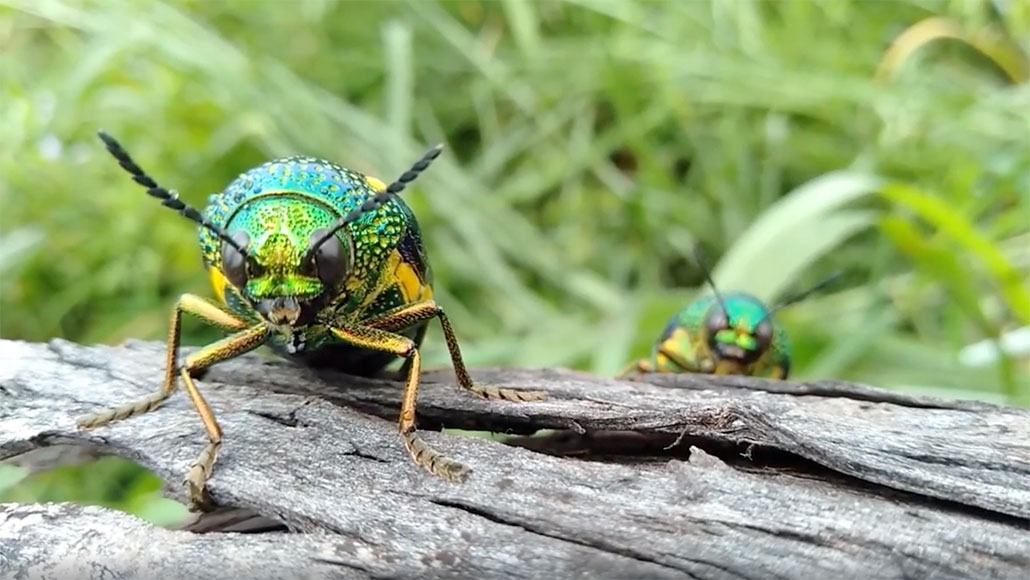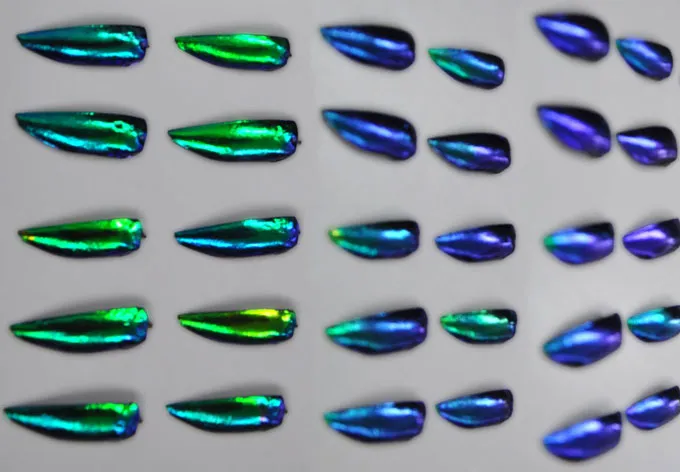Sparkly exoskeletons may help camouflage beetles from predators
Long thought to help insects stand out, iridescence may instead let some blend in

Asian jewel beetles (Sternocera aequisignata) stand out with their iridescent exoskeleton. New experimental evidence suggests this iridescence can actually help camouflage these beetles from both birds and humans in the wild.
K. Kjernsmo et al/Current Biology 2020, University of Bristol







